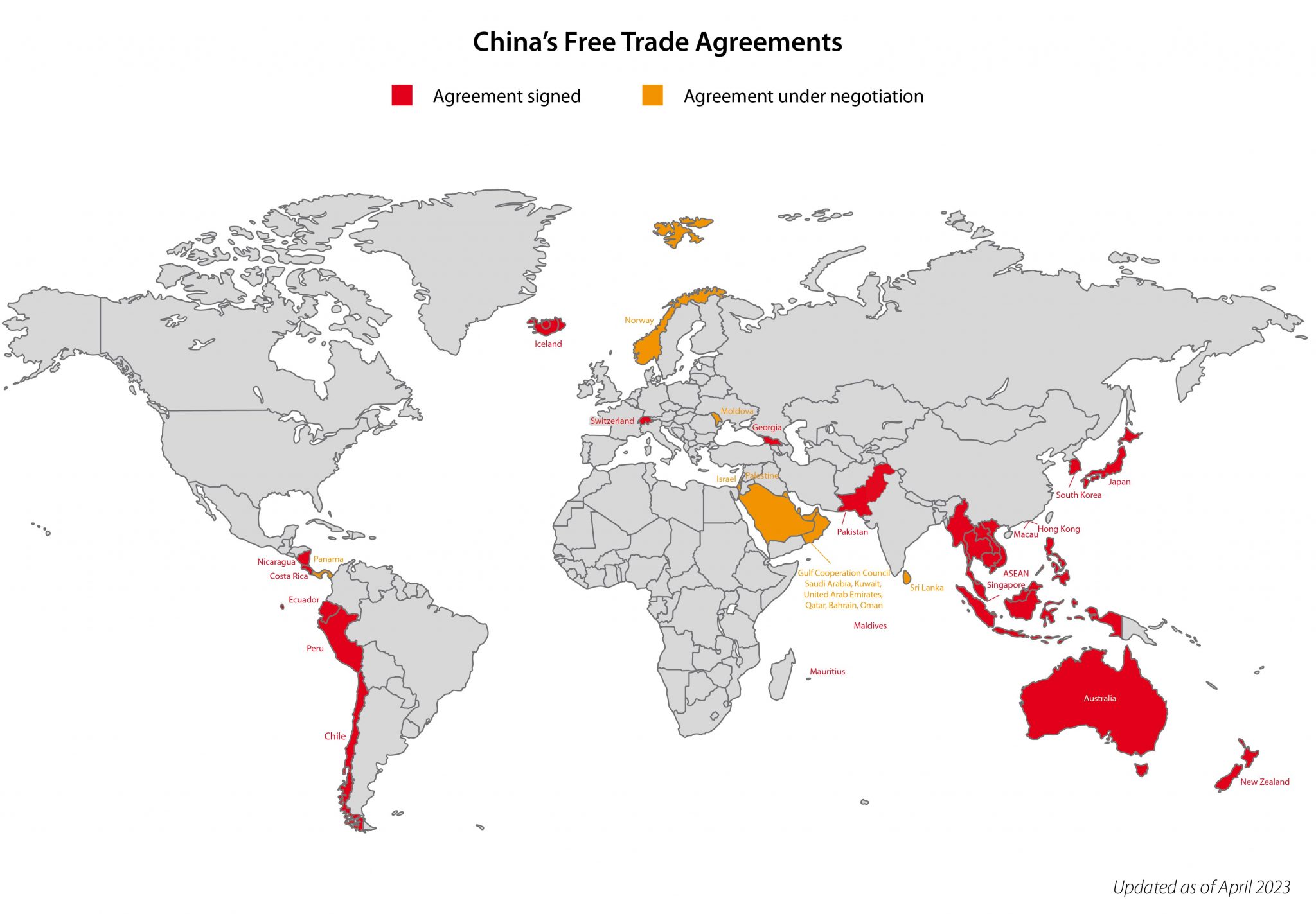The Regional Comprehensive Economic Partnership (RCEP) is the world’s largest free trade agreement, uniting 15 economies, including China, Japan, South Korea, and members of The Association of Southeast Asian Nations (ASEAN). It is emerging as a beacon of hope for the future of multilateralism. Led by regional middle powers like India has signed a landmark free trade deal with the European Free Trade Association (EFTA), which represents Iceland, Liechtenstein, Norway and Switzerland. The EFTA was set up in 1960 to promote closer economic cooperation and free trade in Europe. The EU and New Zealand team up for a free trade agreement In 2023, the European Union and New Zealand signed a trade pact , concluding five years of discussions. The agreement is set to significantly reduce costs for EU businesses, potentially saving them upwards of $153 million annually in duties .
The EU and New Zealand team up for a free trade agreement In 2023, the European Union and New Zealand signed a trade pact , concluding five years of discussions. The agreement is set to significantly reduce costs for EU businesses, potentially saving them upwards of $153 million annually in duties . The CPTPP is a free trade agreement between Japan, Malaysia, Vietnam, Australia, Singapore, Brunei, New Zealand, Canada, Mexico, Peru and Chile. It is one of the biggest trading blocs in the world, worth 15% of global GDP once the UK joins. The rapid progress on the India-UK Free Trade Agreement demonstrates the efforts invested in its shaping by the national leaderships of both countries. In addition to marking the maturing of the bilateral enhanced trade partnership (ETP) , the agreement will focus on removing market access barriers to facilitate a greater flow of goods, services, capital,. An agreement on the Trans-Pacific Partnership (TPP) was reached finally. The TPP negotiations involved only 12 countries, but had to go through lots of twists and turns because of a crisscross of confrontational relationships – large advanced economies versus emerging economies, exporters versus importers in agricultural trade, and market economy. Mercosur (Southern Common Market) country members (Argentina, Brazil, Uruguay and Paraguay) and the European Free Trade Association (EFTA), a bloc formed by Switzerland, Norway, Iceland and Liechtenstein, have successfully completed an exploratory dialogue and preliminary negotiations for a Free Trade Agreement (FTA).
The rapid progress on the India-UK Free Trade Agreement demonstrates the efforts invested in its shaping by the national leaderships of both countries. In addition to marking the maturing of the bilateral enhanced trade partnership (ETP) , the agreement will focus on removing market access barriers to facilitate a greater flow of goods, services, capital,. An agreement on the Trans-Pacific Partnership (TPP) was reached finally. The TPP negotiations involved only 12 countries, but had to go through lots of twists and turns because of a crisscross of confrontational relationships – large advanced economies versus emerging economies, exporters versus importers in agricultural trade, and market economy. Mercosur (Southern Common Market) country members (Argentina, Brazil, Uruguay and Paraguay) and the European Free Trade Association (EFTA), a bloc formed by Switzerland, Norway, Iceland and Liechtenstein, have successfully completed an exploratory dialogue and preliminary negotiations for a Free Trade Agreement (FTA). Make no mistake: It is evident from the main outstanding issues, over which negotiators are still haggling, that the TPP is not about “free” trade. New Zealand has threatened to walk away from the agreement over the way Canada and the US manage trade in dairy products. Australia is not happy with how the US and Mexico manage trade in sugar ...
